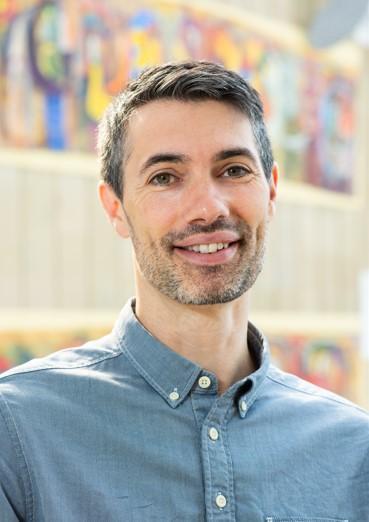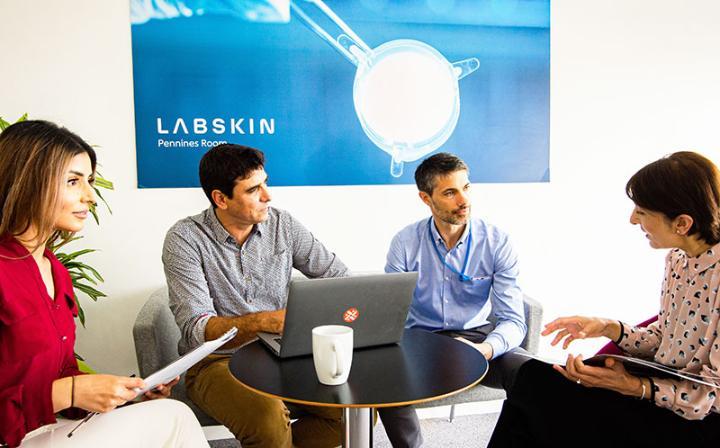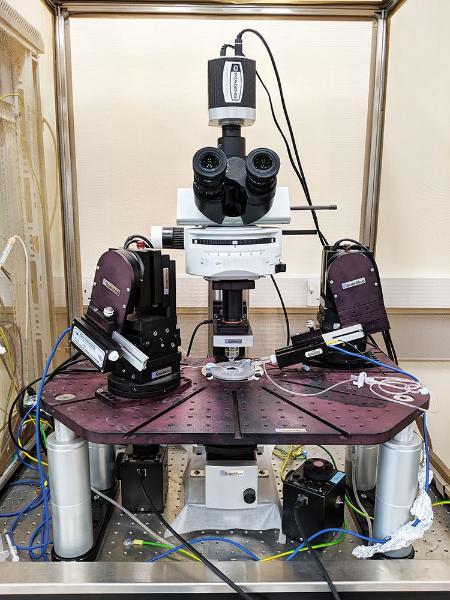Academic profile – Jacobo Elies Gomez
Investigating the cardiovascular system and the effects of air pollution
Jacobo Elies Gomez, Associate Professor in the School of Pharmacy and Medical Sciences joined the University of Bradford in 2017. His work looking at the pharmacology of cells includes research into the cardiovascular system, cancer and neuroscience, and he has recently organised the first Air Pollution & Public Health Research Network event to bring together the region’s leading experts in pollution in relation to health and wellbeing.
We caught up with him for a brief overview of his research career and current projects.
Can you tell us about your background, and how your research has evolved?
I started my PhD in in 2004 at the University of Santiago de Compostela in Spain, where my interest in the cardiovascular system started. I was exploring the French paradox, basically why in Mediterranean populations the incidence of cardiovascular disease was lower, although the levels of fatty acids and fat in the diet were similar to those in North European countries. The key to this is in the polyphenols in the Mediterranean diet, including in red wine, and I was examining how the presence of those polyphenols enables a passive relaxation in the blood vessels which contributes to lower blood pressure.
Following this, I spent a year in Professor Colin Taylor's lab in the Department of Pharmacology at University of Cambridge, and then went on to the University of Leeds to work with Professor Chris Peers, as I was looking to develop my knowledge of electrophysiology, the study of the electrical properties of biological cells and tissues. Here I also gained a good knowledge of gasotransmitters, small gases (nitric oxide, carbon monoxide and hydrogen sulfide) that are produced in cells which have specific biological functions, including the relaxation of blood vessels, and I've been exploring this in my research, particularly in relation to the cardiovascular system.

Dr Jacobo Elies Gomez
How has working at Bradford influenced your research?
The University has allowed me to apply elements of my research across a range of subjects; I was involved in a Knowledge Transfer Partnership working with the Centre of Skin Sciences to develop a human and 3D pigmented skin equivalent model that was in collaboration with Labskin, a company based in York.
I’m collaborating with Dr Farshid Sefat and team in Engineering who are developing biocompatible materials for blood vessels, and I am responsible for making sure the materials aren’t toxic to the body prior to clinical testing.
And more recently I’ve been working with Dr Amalia Ruiz Estrada on nano-materials and drug delivery, monitoring cellular behaviour in long-term experiments with the objective of advancing cancer therapeutics.
A few years ago I moved from Pharmacology & Experimental Therapeutics (PET) group to the Institute of Cancer Therapeutics (ICT) to benefit from its research infrastructure and align my research on that field, which seemed like a natural fit as a lot of cancer drugs have effects on the cardiovascular system and mainly on cardiac function, and one of my areas of interest is looking into those mechanisms of toxicity.

The University of Bradford and Labskin Knowledge Transfer Partnership team members (left to right): Omera Bi, David Caballero, Jacobo Elies, and Sobia Kauser.
Can you pick out some career highlights?
One thing that I’ve had a positive outcome from is from our studies on the actions of CO in cardiac ion channels. This fundamental work showed for the first time how carbon monoxide poisoning triggers cardiac arrhythmias (abnormal heart rhythms) by altering ion channel activity (sodium and calcium channels) in the heart; and indicated that using a calcium inhibitor can help a patient's recovery. The American Thoracic Society has taken our research and introduced new clinical protocols for carbon monoxide poisoning in the USA.
Another thing that stands out was the discovery that the way that scientists had thought about the concentration of hydrogen sulfide in relation to pain stimuli was wrong. It was very difficult to convince the scientific community that the previous research was inaccurate, but at an international meeting in Japan I met the scientist who published the previous data and managed to explain the problems with the electrophysiology in his research, and I went on to publish my findings in the Federation of American Societies for Experimental Biology (FASEB) Journal and Journal of Physiology.

Jacobo and team in the lab, Summer 2023; left to right: Mai Al-Jarrah (MSc student), Courtney Riley (Year 2 PhD Student), Teslim Thomas (Summer student), and Jacobo Elies.
Also, I was responsible for setting up an imaging and electrophysiology laboratory in the Faculty of Life Sciences. Electrophysiology is the fundamental technique to study the electrical activity of cells, ion channel function and cardiac arrhythmias. Since 2022, I lead a Bio-Imaging & Electrophysiology Lab and I am the supervisor for PhD student Courtney Riley who is looking at how pollutant gases affect heart function.
I’m also proud to be part of the Society of Spanish Researchers in the UK (SRUK), a big network of more than 700 PhD students, postdocs and academics in UK universities (who work together to promote research collaboration between Spain and the UK). SRUK has developed to include scientific writing, a blog, a radio channel, research grants, national awards and conferences where members come to share their projects.

The Electrophysiology rig located in the ICT, Faculty of Life Sciences.
How did the Air Pollution and Public Health Research Network event come about?
I love sharing my research with people who are curious about science and health. One of the challenges I face is how to explain electrophysiology, which is the method I use to study how electricity flows in the heart and what can go wrong when it doesn't. Electrophysiology is essential to understand how cells and molecules work in the heart to maintain a healthy strong heartbeat, but it's not easy to make it accessible and engaging for a general audience. I find it easier to connect when I start talking about traffic emissions, urban green spaces and their impact in respiratory diseases.
That's why I decided to bring together this network of experts who are working on air pollution and health issues, which are more relevant and relatable for the public and patients. Bradford seemed an ideal place to host an event, with initiatives like Born in Bradford and the Clean Air Zone (CAZ), so we invited representatives from these, along with experts from Leeds University to the event at the Digital Health Enterprise Zone in Nov 2023. It was a very useful meeting with six presentations, sadly we didn't have much time for networking, so we definitely need a second meeting to have more time for networking and developing ideas. This is definitely something that we are going to do in 2024 alongside increasing visibility of the network.
Through these projects, I hope to connect my research on electrophysiology with the broader context of air quality and health, and to communicate it in a way that is interesting and meaningful for everyone.
